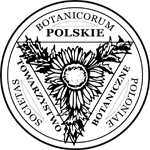Response of tomato seedlings inoculated with mycorrhizal fungi on the photosynthetic activity, growth, and health status of plants after infection with the fungus Colletotrichum coccodes
Abstract
Keywords
Full Text:
PDFReferences
Dillard HR. Colletotrichum coccodes: the pathogen and its hosts. In: Bailey JA, Jeger MJ, editors. Colletotrichum: biology, pathology and control. Wallingford: CABI; 1992. p. 225–236.
Alm IP, Uhm KH, Kim S, Lee YH. Signaling pathways involved in preinfection development of Colletotrichum gloeosporioides, C. coccodes, and C. dematium pathogenic on red pepper. Physiol Mol Plant Pathol. 2003;63:281–289. https://doi.org/10.1016/j.pmpp.2004.01.001
Jamiołkowska A, Skwaryło-Bednarz B, Patkowska E. Morphological identity and population structure of hemibiotrophic fungus Colletotrichum coccodes colonizing pepper plants. Acta Scientiarum Polonorum, Hortorum Cultus. 2018;17(4):181–192.
Jamiołkowska A, Księżniak A, Hetman B, Kopacki M, Skwaryło-Bednarz B, Gałązka A, et al. Interactions of arbuscular mycorrhizal fungi with plants and soil microflora. Acta Scientiarum Polonorum, Hortorum Cultus. 2017;16(5):89–95. https://doi.org/10.24326/asphc.2017.5.9
Jamiołkowska A. Effect of field pea (Pisum arvense L.) as cover plant on health of under-ground part of field tomato. Vegetable Crops Research Bulletin. 2007;67:71–79. https://doi.org/10.2478/v10032-007-0032-6
Jamiołkowska A, Wagner A, Sawicki K. Fungi colonizing roots of zucchini (Cucurbita pepo L. var. giromontina) plants and pathogenicity of Fusarium spp. to zucchini seedlings. Acta Agrobot. 2011;64(1):73–78. https://doi.org/10.5586/aa.2011.009
Wenzel H. Zur Erfassung des Schadenausmasses in Pflanzenschutzversuchen. Pflanzenschutz-Berichte. 1948;15:81–84.
Księżniak A, Orlikowsk LB, Szałański W, Wróblewska B. Wpływ szczepionek mikoryzowych dla wrzosowatych na wzrost, rozwój i zdrowotność różanecznika odmiany Nova Zembla oraz borówki amerykańskiej odmiany Bluecrop. Progress in Plant Protection. 2013;53(1):191–195.
Pereira JAP, Vieira IJC, Freitas MSM, Prins CL, Martins MA, Rodrigues R. Crops and soils review. Effects of arbuscular mycorrhizal fungi on Capsicum spp. J Agric Sci. 2016;154:828–849. https://doi.org/10.1017/S0021859615000714
Jamiołkowska A, Księżniak A, Gałązka A, Hetman B, Kopacki M, Skwaryło-Bednarz B. Impact of abiotic factors on development of the community of arbuscular mycorrhiza fungi in the soil. Int Agrophys. 2018;32:133–140. https://doi.org/10.1515/intag-2016-0090
Nitzan N, Tsror (Lahkim) L, Johnson DA. Vegetative compatibility group and aggressiveness of North American isolates of Colletotrichum coccodes, the causal agent of potato black dot. Plant Dis. 2006;90(10):1287–1292. https://doi.org/10.1094/PD-90-1287
Głuszek S, Sas-Paszt L, Sumorok B, Derkowska E. Wpływ mikoryzy na wzrost i plonowanie roślin ogrodniczych. Postępy Nauk Rolniczych. 2008;6:14–15.
Cieślińska K, Skalska A, Cisek D, Krzyżak J, Pogrzeba M. Mikoryza arbuskulama wybranych gatunków roślin energetycznych uprawianych na terenie zanieczyszczonym metalami ciężkimi. Interdyscyplinarne Zagadnienia w Inżynierii i Ochronie Środowiska. 2016;7:13–28.
Shariati J, Weisany W, Torabian S. Effect of Azotobacter and arbuscular mycorrhizal on growth of safflower (Carthamus tinctorius L.) at different irrigation regimes. Electronic Journal of Polish Agricultural Universities. 2015;18(4):01.
Kubiak J. Wpływ różnych szczepionek mikoryzowych na wzrost sosny i liczbę pączków. Inżynieria Rolnicza. 2007;3(91):123–128.
Golcz A, Bosiacki M. Reakcja tymianku właściwego (Thymus vulgaris L.) na wzrastające dawki azotu oraz zabieg szczepienia grzybami mikoryzowymi. Journal of Research and Applications in Agricultural Engineering. 2008;53(3):72–74.
Jamiołkowska A, Michałek W. Effect of mycorrhiza inoculation of pepper seedlings (Capsicum annuum L.) on the growth and the protection against Fusarium oxysporum infection. Acta Scientiarum Polonorum, Hortorum Cultus. 2019;18(1):161–169.
Ozgonen H, Erkilic A. Growth enhancement and Phytophthora blight (Phytophthora capsici Leonian) control by arbuscular mycorrhizal fungal inoculation in pepper. Crop Prot. 2007; 26(11):1682–1688. https://doi.org/10.1016/j.cropro.2007.02.010
Lambais MR. Regulation of plant defense-related genes in arbuscular mycorrhizae. In: Podila GK, Douds DD Jr, editors. Current advances in mycorrhizae research. St. Paul, MN: American Phytopathological Society Press; 2000. p. 46–60.
DOI: https://doi.org/10.5586/aa.1785
|
|
|






